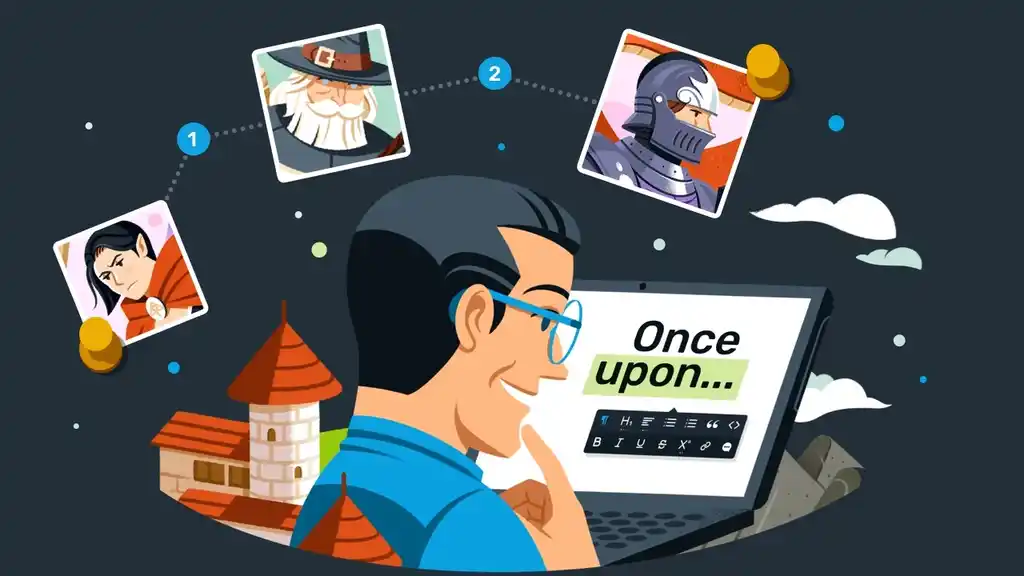Menu
Write your book in Reedsy Studio. Try the beloved writing app for free today.
Craft your masterpiece in Reedsy Studio
Plan, write, edit, and format your book in our free app made for authors.
Write your book in Reedsy Studio. Try the beloved writing app for free today.
Craft your masterpiece in Reedsy Studio
Plan, write, edit, and format your book in our free app made for authors.
DIRECTORY
Showing 119 writing exercises curated by Reedsy.
Pick up one of your favorite novels. Open it to a random page. Whatever chapter you land on, rewrite it your own way. Take it in a totally different direction than how it actually plays out in the book.
There's one powerful motivator that led your reader to your book - curiosity. Our brain doesn't stop asking questions because it knows that's how it learns and evolves. Questions raise uncertainty. Unknowns. And if there's an unknown, then humans want to make it known. There will be a big question that drives your story, so take a couple of minutes to consider the mother-question that propels your book from beginning to end.Your manuscript also needs to be powered by lots of little questions. Your book will need a variety of whos, whens, whys, and wheres to keep your reader engaged. In fact, every scene in your book needs to have a question define it. It's what will keep your reader turning those pages. Review each of your scenes and identify the question/s hanging over it, because once you nail that, their mind will be asking the most important question of all - what happens next?
"Gossip, as usual, was one-third right and two-thirds wrong," wrote L.M. Montgomery. Improvise a gossipy dialogue between two characters (Character A and Character B) about your protagonist (Character C). If these fractions are followed, what do Character A and Character B get right about your protagonist - and what do they get wrong?
Your protagonist meets your villain for the first time - on a blind date. What happens?
A few well-chosen words can create a strong sense of place which adds a rich dimension to your story. It draws your reader right in, as if they were in the room with your characters.Choose one of the following places and describe it using ALL of your five senses (touch, taste, sight, smell, hearing). In fiction, you won't usually use all five, but limbering up your storytelling this way will help you show rather than tell the story:
Write a list of images you associate with your theme. Now do the same for each of your main characters. Keep these images in mind as a way to present your theme metaphorically through symbolic motifs.
A stranger walks into the general store and buys a hammer, a hatchet, some rope, and an apple. What does he do with them?
Come up with three thought provoking questions. Such as:
Choose a random occupation, a random personality trait, and the trait's opposite. Now, outline a train of events that explains how a person of your chosen occupation changes from having the random trait to having its opposite. Let's take, for example: "martial arts teacher," "shy," and "confident." What would make a shy martial arts teacher change into a confident one?Care for a double challenge? Try plotting the opposite path, too: a confident martial arts teacher turns into a shy person. What would cause that? Experiment with unusual occupations and traits to challenge yourself. Find a collection of traits for download at the end of this article.
As a visual reference, select a box that has dimensions under 12X12 inches. Tape the box closed. Set the box in front of you. Write a story or poem based on what is inside the box.
We made a writing app for you
Yes, you! Write. Format. Export for ebook and print. All for free.
